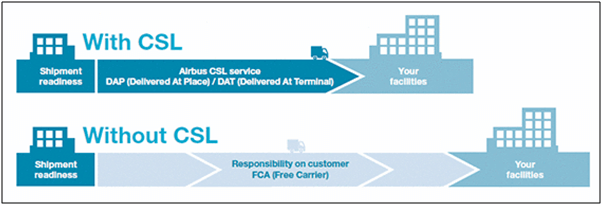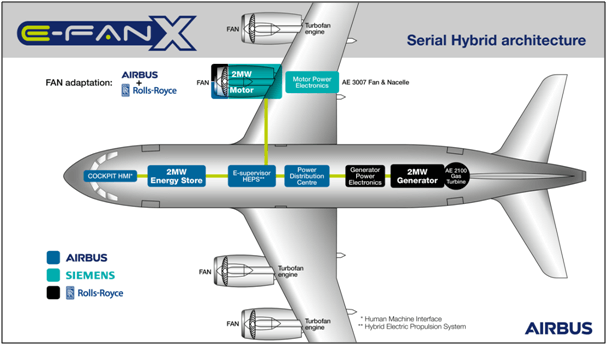As the world becomes more integrated through globalization, it becomes increasingly difficult for aerospace companies to grow and expand through the use of traditional business running methods.
This is especially so when aerospace companies today have become multinational and increasingly dependent on a global supply chain. The aerospace global supply chain is multilayered, complex and vast, hence traditional methods of enhancing top-line value through traditional cost mitigating methods may no longer be applicable and effective. Therefore, it has become increasingly important for global aerospace companies to look at alternative methods to create value in their global supply chain.
This article highlights some value creation strategies that aerospace companies can apply in their global supply chain.

Table of Contents
Improving and Enhancing Product Value through Supplier Bases
One of the strategies aerospace companies can create additional value within their supply chain would be to work with existing or new suppliers to help improve and enhance the value of their products. One way to improve and enhance the value created will be to work with new or current suppliers to improve on the quality of the organization’s products. Improving quality will not only help to create brand loyalty among existing customers, but it may also help to attract new customers. Improving the quality of products supplied by suppliers also helps to impose confidence in reliability and safety to both the organization and customers for aerospace components.
To become suppliers of Boeing and Airbus, suppliers are required to work together with them and comply to AS9100 and NADCAP standards. These standards have many requirements and takes time and money to achieve. As such, Boeing and Airbus suppliers are often privileged and exclusive. It is also because of this exclusivity, the number of defects from these suppliers’ components are kept at a low 0.04%. Aerospace companies’ can also work with suppliers to ensure more reliable delivery or better stocking programs in place with suppliers ensures that components required to complete the finished product will be readily available when required. This minimizes delivery lead time to customers improving customer satisfaction and helps to build brand loyalty.
SATAIR a company of Airbus supplying airbus parts and components to MRO companies implemented a 24-hour global delivery commitment in 2019 for all materials in stock ready for pick-up from all warehouses. This resulted in an average duration per outbound order to decrease below 24 hours on average. In addition, all Aircraft on Ground (AOG) orders for materials in stock are ready to pick up in just 4 hours. With 24-hour delivery commitment from SATAIR, MRO service providers can redeliver aircraft to airlines faster, allowing airlines to put aircrafts into operation faster, minimizing revenue loss due to maintenance.

Joint Development with Suppliers for Global Supply Chain
Another way aerospace companies can create value, would be to carry out joint development projects with suppliers to develop new innovations that will bring about new values for the organization. These new innovations provide the organization with competitive and first-mover advantages.
E-Fan X, hybrid-electric propulsion for commercial aircraft is jointly developed by Siemens, Rolls Royce, and Airbus. Rolls-Royce is an engine supplier for Airbus planes, and Siemens is a component and technology supplier to Airbus. By developing the E-Fan X engine together, all 3 organizations will reap the competitive advantage and first-mover advantage when the engine is produced and put into use.

Coordinating Logistics and Transportation in the Supply Chain
By having a coordinated transport and logistics platform, planners and managers will have increased visibility and transparency into the constantly shifting variables within the global supply chain.
This is an important point to look at in reducing overall transportation costs and optimizing the logistics and transportation to maximize resources and capital to ensure the best and maximize return in both efficiency and revenue. Such a platform will provide planners and managers the power and ability to uncover the areas of wastages and inefficiencies in their transportation strategies (such as container levels, fuel consumption, inaccurate routing processes, ineffective distribution and warehousing networks, and long lead times between warehousing and delivery).
They will then be able to deploy leaner methods of transportation and logistics; avoiding bottlenecks or breakdowns in the transit stage of their value chain. This, in turn, translates to higher value creation per unit of resource for the organization. One notable example will be Airbus partnering with DB Schenker to develop a logistics plan to accommodate the manufacturer’s larger, ocean-going components and assembly shipping vessels. The vessels are now being used for the international transport of four complete airplanes (a number that will increase to five in 2019) per month.

Vertical Integration of Supply Chain
Another value creation strategy would be to adopt a vertical integration of the supply chain. Through vertical integration, aerospace companies can gain control over critical processes throughout their supply chain. Additionally, vertical integration helps to reduce operating costs by removing supplier margins either by removing a supplier entirely or cutting down on the processes outsourced to the supplier.
Vertical integration will also create new value for the organization by opening up new products and service markets for the organization.Boeing Company created a new business unit called Boeing Avionics to develop and build aircraft avionic systems in a bid to not only reduce course but also expand the company’s existing offering of an electronics system, with emphasis on areas such as navigation and flight controls for future commercial and military aircraft.
By setting up this business unit, Boeing have now ventured into the market of avionic systems which are traditionally dominated by Rockwell Collins and Honeywell, both major suppliers to Boeing.

Likewise, AIRBUS has tied up with Singapore Airlines Engineering Company (SIAEC) and formed a company called Heavy Maintenance Singapore Services (HMSS) to capture a slice of the after-sale MRO market worth US$8.5 trillion in the next two decades.
Adoption of Digital Technology (Industry 4.0)
Today’s technology has advanced by leaps and bounds and the adoption of these technologies can help create value for aerospace businesses.
The full content is only visible to SIPMM members
Already a member? Please Login to continue reading.
References
Anthony Wong WengFatt, ADPSM. (2019). “New and Emerging Technologies for the Food Supply Chain”. Retrieved from SIPMM: https://publication.sipmm.edu.sg/new-emerging-technologies-food-supply-chain, accessed 08/09/2019.
DB Schenker. (2019). “The five most important trends impacting aerospace logistics today”. Retrieved from https://nowthatslogistics.com/the-five-most-important-trends-impacting-aerospace-logistics-today, accessed 08/09/2019.
Doug Cameron. (2018). “Boeing Creates New Avionics and Electronics Unit”. Retrieved from https://www.foxbusiness.com/features/boeing-creates-new-avionics-and-electronics-unit, accessed 08/09/2019.
Ernst & Young. (2019). “Supply chain management in aerospace and defense”. Retrieved from https://www.ey.com/Publication/vwLUAssets/ey-ad-edge-supply-chain-management-in-aerospace-and-defense/$File/ey-ad-edge-supply-chain-management-in-aerospace-and-defense.pdf, accessed 08/09/2019.
Karin Wang, ADPSM. (2019). “Blockchain for visibility in Food Supply chain”. Retrieved from SIPMM: https://publication.sipmm.edu.sg/blockchain-visibility-food-supply-chain, accessed 08/09/2019.
Nick Ostdick (2017). “How Transport Logistics Adds Business Value”. Retrieved from: https://blog.flexis.com/how-transport-logistics-adds-business-value, accessed 08/09/2019.
Nisha Ramchandani (2018). “Airbus, Boeing eye after-sales market, but there’s room for Singapore players”. Retrieved from: https://www.businesstimes.com.sg/transport/airbus-boeing-eye-after-sales-market-but-theres-room-for-singapore-players, accessed 08/09/2019.





